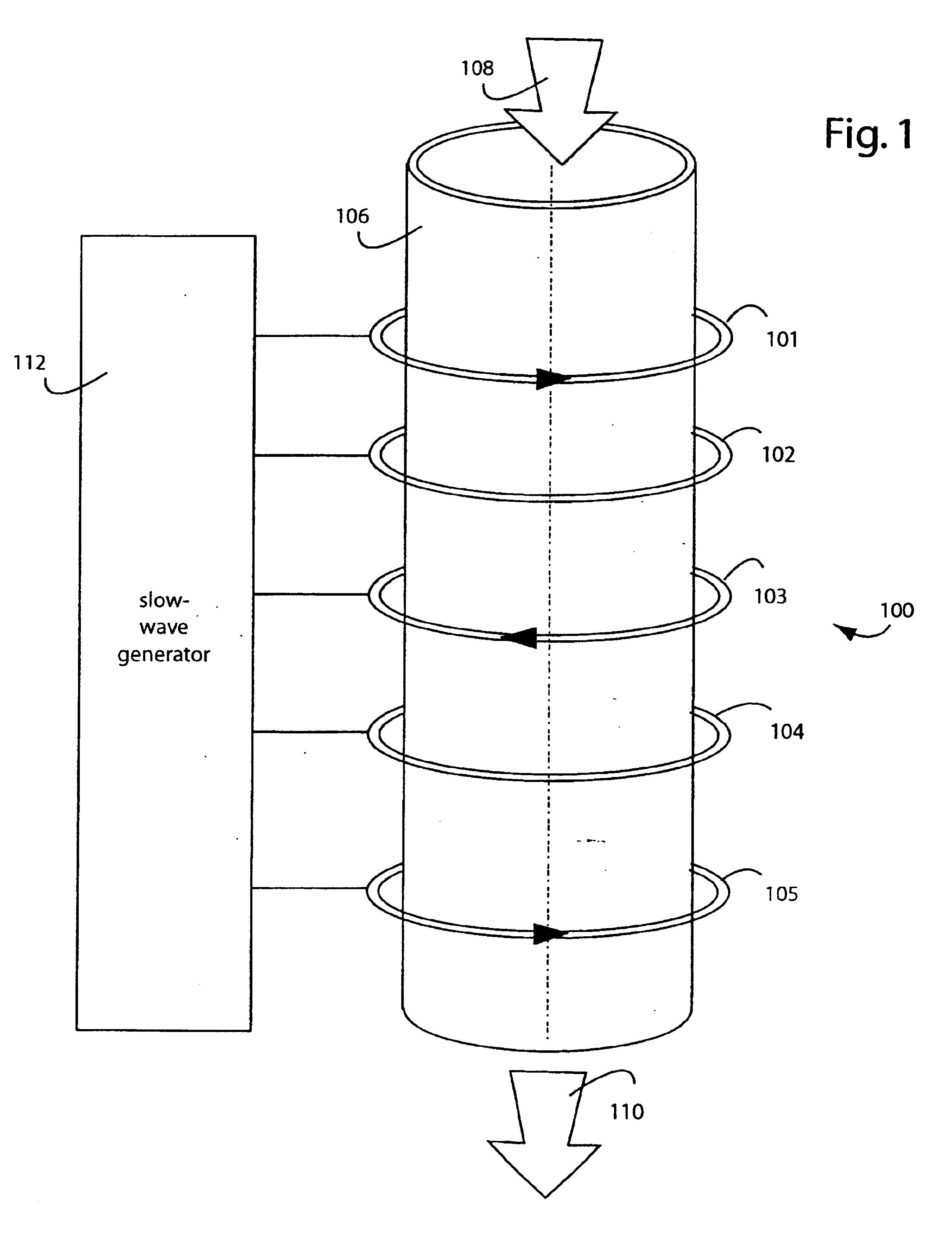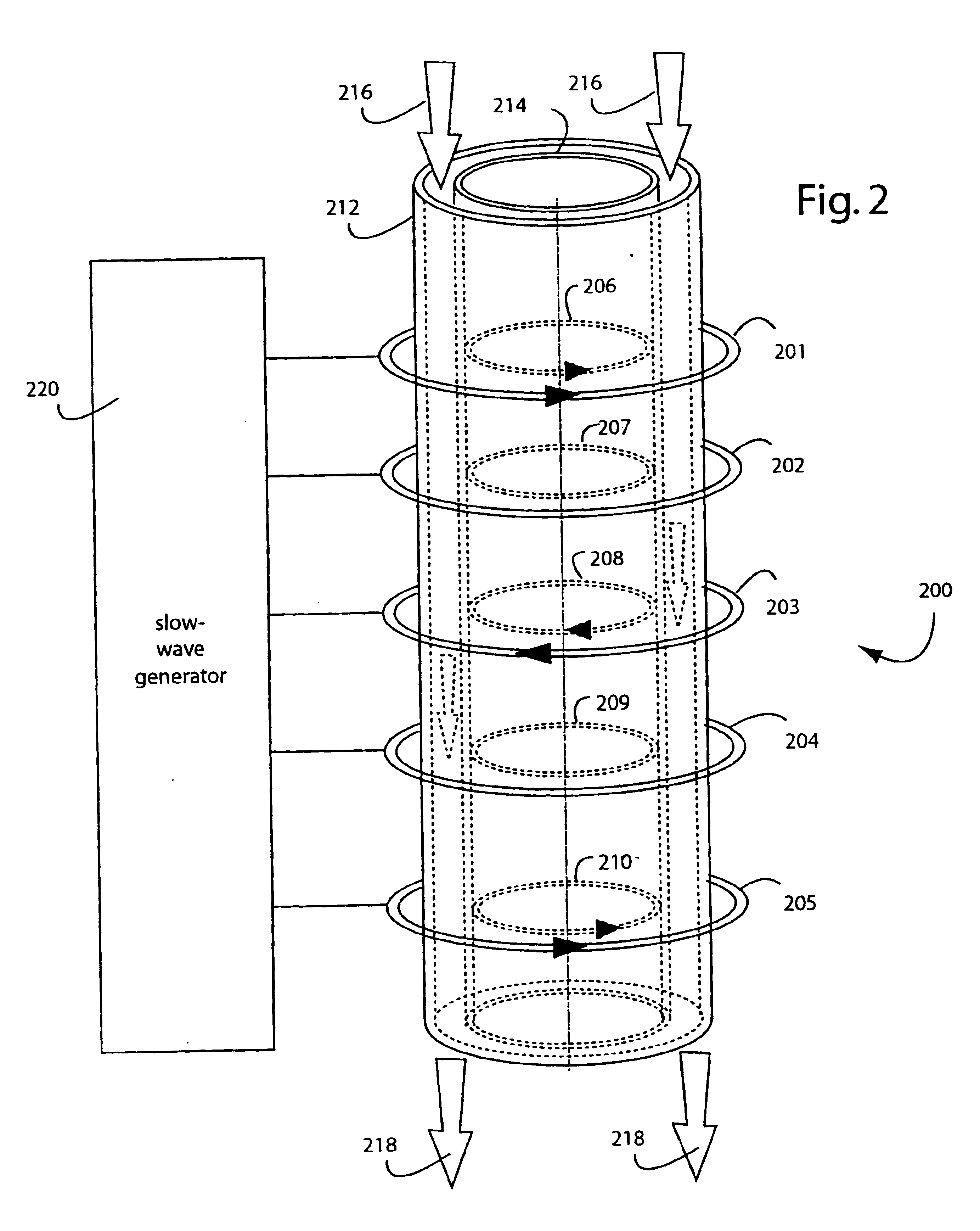Slow-wave induction plasma transport
a plasma transport and slow-wave technology, applied in the field of plasma chemistry, can solve the problems of reducing the efficiency of plasma transpor
- Summary
- Abstract
- Description
- Claims
- Application Information
AI Technical Summary
Benefits of technology
Problems solved by technology
Method used
Image
Examples
Embodiment Construction
[0023]FIG. 1 represents a plasma transport system embodiment of the present invention, referred to herein by the general reference numeral 100. The system 100 includes a set of five equally spaced coil inductors 101-105 coaxially disposed in a spatial array along the outside of a slow-wave structure 106. The slow-wave structure 106 comprises a hollow cylinder of dielectric material, such as ceramic. The use of five such inductors is simply for illustration in FIG. 1, more such inductors are possible.
[0024]An entering plasma and gas mixture 108 at the top is propelled along inside the duct to become an exiting plasma and gas flow 110. A slow-wave generator 112 produces five sets of signal waveforms to the inductors 101-105 that cooperate to move the plasma and gases along inside. The signal phases between the outputs of the slow-wave generator 112 are separated by π2.
The slow-wave generator 112 drives the plasma and gases along inside by generating five phased RF drive currents, resp...
PUM
 Login to View More
Login to View More Abstract
Description
Claims
Application Information
 Login to View More
Login to View More - R&D
- Intellectual Property
- Life Sciences
- Materials
- Tech Scout
- Unparalleled Data Quality
- Higher Quality Content
- 60% Fewer Hallucinations
Browse by: Latest US Patents, China's latest patents, Technical Efficacy Thesaurus, Application Domain, Technology Topic, Popular Technical Reports.
© 2025 PatSnap. All rights reserved.Legal|Privacy policy|Modern Slavery Act Transparency Statement|Sitemap|About US| Contact US: help@patsnap.com



